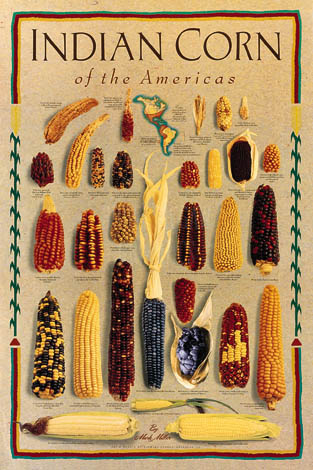Indigenous Knowledge Systems: Tangled Earth

That explains the woven heaven. But what of the tangled earth? The trickster gods, usually represented by animals like the coyote (Mexico) or the guinea pig (Ecuador), are constantly disrupting order with unpredictable surprises. They represent the idea that life’s unpredictability can only be survived by an equally diverse repertoire of responses. The idea may have co-evolved with the ways the people of the Indigenous Americas emphasized diversity in their crops. If nature throws a flood one year and a drought the next, only broad genetic diversity in crops can help you survive. When Europeans arrived they were astounded to find a genetic treasure trove: corn, potato, tomato, bell pepper, chili pepper, vanilla, tobacco, beans, pumpkin, cassava root, avocado, peanut, pecan, cashew, pineapple, blueberry, sunflower, chocolate, and other plants they did not even know of's existence. Many had been bred for centuries to maximize variety. The European concept of a single, perfect, omnipotent God may have inspired useful concepts like optimization--find the one best type of oats--but in the long run that diminished their crop varieties.